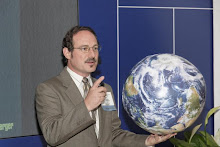In the book that will eventually trace the course of this particular scientist through the global oilfields, speculatively titled "Hold My Beer and Watch This!", I will undoubtedly have to spend some time explaining how a short intellectual kid from Chicago ended up driving a 27-ton Litton Vibrator Truck in Pecos, Texas. In his book "This is Not a Drill: Just Another Glorious Day in the Oilfield", Paul Carter describes some of the motives that led him to join offshore rig crews; namely wanderlust, camaraderie, and lucrative contracts. Interestingly, these were among the same things listed by Frank "The Irishman" Sheerhan in the book "I Hear you Paint Houses" as reasons for him joining the Mob....
In my case it was not only the prospect of a lucrative job actually using my college degree when the mining business was collapsing around Upper Michigan in the early 1980's, the possibility to work in remote exotic locations (ok, but Pecos?) and knowing I would be working with geoscientists who I already knew to be a friendly and jovial lot, but the fact that at that time, oil companies were actually using some of the spiffiest technological equipment of the times. I mean, we had access to computers!
I could actually submit a seismic processing job from a teletype terminal in Midland, Texas, and have it checked and submitted by a computer operator in The Woodlands outside of Houston the same day. I knew I had picked the right industry when, in the mid 1980's, the U.S. government decided they could help fund the big government labs by finding commercial applications for some of the technology. When Los Alamos in New Mexico went looking for industry customers, one of the first segments they turned to was "Big Oil". I found myself on a trip from Dallas Texas to Albuquerque New Mexico with a delegation of oil and gas technologists to get a first look at what the weapons guys had been doing inside of the top secret walls that housed the Manhattan project in it's day. We didn't get "inside the wall" where they do the real crazy stuff, and our unfortunately Iranian-born Vice President didn't even get that far, his clearance was denied at the gate and he spent the day in the hotel and looking at "Fat Man" and "Little Boy" in the museum. But the conversations we had around the conference table that day were pretty interesting.
"Oh so you want a way to reduce engine noise on a ship so you can listen better to sonic waves? ... yeah we can do that"
"Oh so you would like to be able to run huge 3D process simulation using parallel processing and hierarchical storage of modeling data? ... yeah we can do that"
And when the previously cloistered government scientists from the weapons lab met the oilfield completion engineers working on downhole perforation guns for deep drilling, it got really interesting:
"Oh it would be good if you could direct a shaped explosive charge to blow a precisely oriented hole through thick steel casing from a few miles away? Hell Son, we do that every god-damned day around here! Wanna come out to the range and see it?"
Later in the day I got to walk through what was then one of the largest computers on the planet, the Thinking Machines CM-2 massively parallel hypercube array, and when I say walk through, that's exactly what I mean. You didn't stand and look at this computer, you walked into it! I knew it was big when I saw them wheeling in a standard workstation like the ones we were using at the time to run our 3D visualizations, on a cart, and start to use it to run a backup of just part of the array.
They also had a Cray-2 there, the same model I ran into in the Musée des Arts et Métiers in Paris when my wife and I visited for our 25th anniversary in 2006. I was later to find out it was not only the same model, but in fact the very same machine I had reverently laid my hand on to feel the chilled water cooling system when it was running simulated nuclear explosion models in New Mexico two decades earlier and an ocean away. Now where else but the oilfield could you make a connection like that?
Thursday, February 17, 2011
Subscribe to:
Post Comments (Atom)

No comments:
Post a Comment